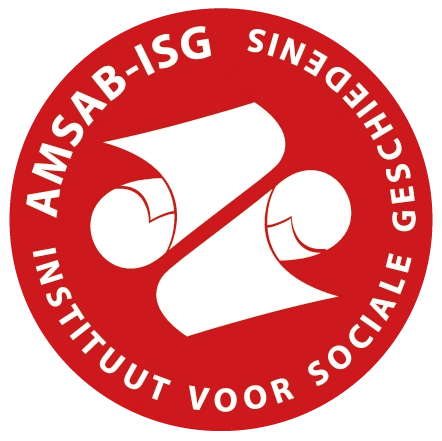Inhoud
- Een blik in het archief van Camille Huysmans
- Het digitaliseringsproces
- Raadpleeg het archief via de onlinecatalogus en de inventaris
- De fotocollectie
- De bibliotheekcollectie
Een blik in het archief van Camille Huysmans
Door Gert Van Overstraeten
Als socialistisch politicus drukte Camille Huysmans zijn stempel op de Belgische binnenlandse politiek en speelde hij internationaal eveneens een prominente rol. Het omvangrijke archief dat hij naliet bevat dan ook een schat aan bronnenmateriaal over de meest diverse en uiteenlopende onderwerpen.
1871 was niet enkel het jaar van de revolutionaire opstand van de Commune van Parijs, maar ook het jaar waarin Camille Huysmans werd geboren. In het jaar dat hij overleed vond de Parijse studentenrevolte van mei 1968 plaats. In deze tijdspanne van een kleine eeuw was Huysmans getuige van ingrijpende gebeurtenissen zoals twee wereldoorlogen, de Russische revolutie, de Spaanse burgeroorlog, de Koude Oorlog, de onafhankelijkheidsstrijd van de kolonies …
In zijn archief springen een aantal zaken in het oog. Voor wat betreft de nationale politiek zijn daar zeker het wel en wee in de Belgische socialistische partij (en daaraan gelieerde organisaties), de lokale Brusselse en vooral Antwerpse politiek en daarmee samenhangend de belangen van de Antwerpse haven, de diamantnijverheid en de Joodse inwoners, allerhande onderwijskwesties, de taalstrijd en communautaire kwesties (waarbij zijn streven naar de vernederlandsing van de Gentse universiteit een belangrijke plaats inneemt), de geïnterneerde Belgische soldaten in Nederland gedurende de Eerste Wereldoorlog en de Belgische vluchtelingen in Groot-Brittannië tijdens de Tweede Wereldoorlog (en respectievelijk activisme en amnestie, en collaboratie en epuratie), de koningskwestie en de onafhankelijkheid van Belgisch-Congo en Ruanda-Urundi. Op internationaal vlak is er in de eerste plaats zijn rol in de Socialistische Internationale, en dan vooral als secretaris van het Internationaal Socialistisch Bureau (1905-1922) waar hij een prominente rol speelde in de Vredesconferentie van Stockholm in 1917. En dan later als secretaris en voorzitter van de Labour and Socialist International/ Internationale Ouvrière Socialiste (1940-1945) en als rapporteur van de Triëste-commissie van de Socialistische Internationale (begin jaren 1950).
Een – niet-limitatieve – opsomming van deze in het oog springende thema’s mag niet verhullen dat het archief zo’n grote rijkdom aan materiaal bevat dat het soms moeilijk wordt door de bomen het bos nog te zien. Huysmans hield zich bezig met het verzet tegen de verplichting voor katholieke onderwijzeressen om hun ontslag aan te bieden als ze huwden, was fel gekant tegen hanengevechten, diende een wetsvoorstel in voor een verbod op boks- en catchwedstrijden, was tussenpersoon bij de verkoop van documenten die de Joodse afkomst van Christopher Columbus aantoonden, was evengoed lid van de raad van de internationale vredesorganisatie Organisation centrale pour une paix durable gedurende de Eerste Wereldoorlog, of vicevoorzitter van de antifascistische groep Fight For Freedom tijdens Wereldoorlog II, naast zovele andere internationale organisaties waarin hij gedurende zijn leven een actieve rol speelde. Het aantal zaken waarover het archief informatie bevat is schier eindeloos en enorm divers.
Daarbij komt nog dat Huysmans niet enkel schepen en tot tweemaal toe minister van Cultuur (en Onderwijs) was, maar ook op persoonlijk vlak een voorliefde had voor alles wat met cultuur te maken had: literatuur, poëzie, toneel, muziek, schilderkunst … slechts weinige kunstvormen kenden geheimen voor deze culturele duizendpoot. Zelfs de taalkunde, de toponymie en de rederijkerskamers konden zijn belangstelling wegdragen. Men kan zich al eens afvragen waar de man ins hemelsnaam nog de tijd vond om zich hierin te verdiepen. Ook van zijn liefde en engagementen voor al deze disciplines is de weerslag terug te vinden in zijn archief. Daarbij springt bijvoorbeeld zijn toevallige ontdekking, op amper 16-jarige leeftijd, van het handschrift van het 17e-eeuwse mysteriespel ‘De Menschwording’ van rederijker Michiel De Swaen in het oog, net als de allereerste wetenschappelijke toponymische studie over zijn geboortedorp Bilzen die hij schreef samen met zijn vriend Cuvelier, of het fantasiespel ‘Luna’ dat eveneens van zijn hand was, en natuurlijk zijn gekende voorliefde voor de verhalen van Reinaert de Vos en Tijl Uilenspiegel, waar hij werkelijk dol op was.
Als socialist, pacifist, antifascist, internationalist, journalist en politicus onderhield Huysmans gedurende zijn leven honderden nauwe contacten, met al dan niet bekende personen. Zijn archief bevat duizenden brieven en andere documenten die hiermee verband houden. Opmerkelijk voor Huysmans als rabiaat antiklerikaal en antifascist, is dat hier ook opvallend veel geestelijken bij zijn en – al dan niet vermeende – collaborateurs.
Duivel-doet-al Camille Huysmans was zeker niet voor één gat te vangen, en dat maakt er zijn archief des te interessanter op.
Het digitaliseringsproces
Door Maarten Savels
In de periode 2017-2020 werd het hele archief van Huysmans gedigitaliseerd, wat een enorme meerwaarde is voor het onderzoek.
Dit project kon onmogelijk gerealiseerd worden zonder de substantiële financiële steun van de Stichting Wetenschappelijk Onderzoek Camille Huysmans. Amsab-ISG is de Stichting, en in het bijzonder dr. Roger Rennenberg, bijzonder dankbaar dat ze ons in staat heeft gesteld om de archivalia van Huysmans op die manier duurzaam te bewaren. Reeds kort na de verwerving van het archief van Camille Huysmans werd beslist dat het gedigitaliseerd moest worden. Twee redenen lagen hiervoor aan de basis.
Enerzijds was Huysmans een bijzonder boeiende persoon die doorheen zijn lange leven ook nog eens veel belangrijke functies heeft uitgevoerd en een uitgebreide en internationale kennissenkring had. Het mag dan ook niet verbazen dat er wereldwijd interesse is voor zijn archief. gedigitaliseerde stukken kunnen relatief gemakkelijk online worden aangeboden, wat een zegen is voor onderzoekers uit het buitenland.
Anderzijds heeft het archief – net als Huysmans zelf – geleefd. Het is meermaals verhuisd en bepaalde delen zijn doorheen de lange jaren beschadigd geraakt door licht, vocht en gebruik. Het is dus niet evident om dit kwetsbare archief regelmatig uit zijn beschermde omgeving te halen voor onderzoek. Eens een stuk gedigitaliseerd is, moet het echter nooit meer worden uitgehaald. Een onderzoeker moet dan wel kunnen beschikken over een natuurgetrouwe kopie van het origineel. Onder meer de kleurweergave moet zo accuraat mogelijk zijn. Daarom maakten we gebruik van Metamorfoze, een internationaal erkende en zeer strikte richtlijn voor digitalisering. Deze richtlijn legt een groot aantal voorwaarden vast. Een van de belangrijkste is dat de digitaliseringsapparaten minstens elke dag gekalibreerd moeten worden aan de hand van kleurkaarten en targets die toelaten om witbalans, belichting, oriëntatie en kleurechtheid te beoordelen. Die kaarten worden gedigitaliseerd en het resultaat wordt met gespecialiseerde software gemeten. Pas als alle metingen binnen bepaalde marges vallen, mag het apparaat gebruikt worden om stukken te digitaliseren.
Uiteraard is niet elk stuk uit het archief even interessant. Bovendien is digitalisering behoorlijk duur en arbeidsintensief. Daarbij komt nog dat ook het opslaan en veilig bewaren van de gedigitaliseerde kopie niet onderschat mag worden. Het is daarom noodzakelijk gebleken om te selecteren. Enkel de stukken die door Huysmans zelf zijn opgesteld of verzameld met een duidelijk doel kwamen in aanmerking. Knipsels die Huysmans louter als documentatie bewaarde of stukken die elders ook te vinden zijn, zoals breed verspreide publicaties en parlementaire stukken die ook gepubliceerd zijn in het Staatsblad, namen we niet mee. We selecteerden 2777 van de 3302 dossiers, samen goed voor iets minder dan 340.000 pagina's.
Dergelijke digitaliseringsprojecten kunnen door hun omvang en technische vereisten nooit in huis worden uitgevoerd. Om de uitbesteding zo vlot mogelijk te laten verlopen, is een goede voorbereiding extra belangrijk. De geselecteerde dossiers werden één voor één gecontroleerd. Er werd een schadeatlas opgesteld, het aantal pagina's werd bepaald en de paginagrootte werd gemeten. De dossiers werden ook allemaal voorzien van een barcode en een etiket met daarop de belangrijkste aandachtspunten voor de digitaliseringsfirma. Hierop kan bv. worden aangegeven dat een dossier zeer kwetsbaar is en heel voorzichtig behandeld moet worden. Als het project eenmaal loopt, dan stuurt de firma dagelijks de beelden van de kalibratietargets door, samen met hun metingen. Het is de bedoeling dat de metingen zo snel mogelijk gecontroleerd worden. Indien er fouten zijn, dan is het digitaliseringstoestel fout ingesteld en is de beeldkwaliteit niet goed. Dat resulteert dan bv. in beelden met een kleurzweem. In dat geval wordt de hele batch van die dag afgekeurd en moet de firma het toestel opnieuw kalibreren en de desbetreffende dossiers opnieuw digitaliseren. Bij oplevering van de beelden gebeuren er nog een aantal controles, o.a. om te verifiëren of er geen pagina's zijn overgeslagen. Het spreekt voor zich dat dergelijke controles erg arbeidsintensief zijn. Voor 10 tot 15 uur digitaliseren is al snel één uur controle nodig.
Het digitaliseringsproject verliep in twee fasen. Eerst werden 545 zeer kwetsbare dossiers geselecteerd. Het waren meteen ook heel interessante dossiers, uit de Eerste Wereldoorlog en de periode dat Huysmans secretaris was van de Tweede Internationale. Deze dossiers werden in 2017 reeds gedigitaliseerd. In 2019-2020 werden de resterende 2232 dossiers afgewerkt.
© Amsab-ISG
Raadpleeg het archief via de onlinecatalogus en de inventaris
De inventaris van Camille Huysmans werd bij Amsab-ISG verwerkt door archivaris Gert Van Overstraeten en is beschikbaar in het Nederlands en Engels. Een groot deel van het archief werd ook gedigitaliseerd met de steun van de Stichting Wetenschappelijk Onderzoek Camille Huysmans en is consulteerbaar via de beeldbank van onze onlinecatalogus.
Raadpleeg het integrale archief in de onlinecatalogus
Raadpleeg de Nederlandstalige inventaris als pdf
Go to the English inventory in pdf
De fotocollectie
Door Rita Calcoen
De fotocollectie bestaat uit duizenden foto’s, zowel van het privéleven van Huysmans als van zijn indrukwekkende politieke carrière.
De oudste foto dateert van 1866 en is een groepsfoto van het Internationaal Arbeiderscongres te Genève. De recentste is een foto van zijn kinderen Sara en Paul Huysmans met zijn kleinzoon Jean-Dominique in 1976.
Omvangrijke fotocollecties als deze worden in de meeste gevallen nooit volledig online ontsloten. Dat is niet alleen bijzonder arbeidsintensief, maar ook niet altijd even relevant. Er werd daarom met veel zorg een representatieve selectie gemaakt. Dit wil niet zeggen dat de rest van de collectie niet online terug te vinden is of ontoegankelijk is. In dit concrete geval is deze opgeborgen volgens de oorspronkelijk toegekende thema’s, en is iedere foto op die manier terug te vinden.
Bekijk het fotoarchief van Camille Huysmans in de onlinecatalogus
Een voorproefje:
© Amsab-ISG
De bibliotheekcollectie
Door Ellena Franquet
Het archief van Camille Huysmans omvat een uitgebreide bibliotheekcollectie, waarvan meer dan 2500 boeken en 700 kranten- en tijdschriftentitels opgenomen werden in de collectie van Amsab-ISG.
Veel voorkomende thema’s zijn onder meer socialisme en de (internationale) arbeidersbeweging, socialistische pers uit binnen- en buitenland, onderwijs, oorlog en pacifisme, de joodse gemeenschap en cultuur, de Vlaamse beweging, … Kortom: een weerspiegeling van zowel de politieke carrière als de persoonlijke interesses van Camille Huysmans.
Twee opvallende deelcollecties zijn het vermelden waard. Enerzijds is de uitgebreide collectie muziekpublicaties bewijs van Huysmans’ passie voor muziek en zang: we vinden er niet enkel boeken rond muziek en muziekgeschiedenis terug, maar ook partituren en liederenbundels met strijd- en volksliederen. Anderzijds blijkt zijn achtergrond in taal- en letterkunde uit de diverse publicaties rond taal, literatuur, folklore en legenden, waarbij Tijl Uilenspiegel en Reinaert de vos vaak terugkomende personages zijn.
Naast deze thema’s kwamen ook publicaties naar boven die niet pasten binnen het collectieprofiel van onze bibliotheek. Het ging hoofdzakelijk om een collectie kunstboeken en romans van Camille zelf, en de bibliotheekcollectie van dochter Sara Huysmans (met hoofdzakelijk Franstalige literatuur). Deze boeken werden niet geïntegreerd in de collectie, maar vonden in 2020 een nieuwe thuis in de Erfgoedbibliotheek Hendrik Conscience in Antwerpen. Die zal na verwerking een fondslijst opstellen om aan de onlinecatalogus van Amsab-ISG toe te voegen. De bibliotheekstukken die wel opgenomen werden, vind je via onderstaande link of in onze onlinecatalogus met de zoekterm ‘Bibliotheek Camille Huysmans’.
Bekijk de bibliotheekcollectie van Camille Huysmans in de onlinecatalogus








